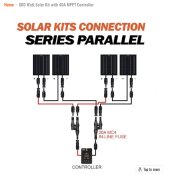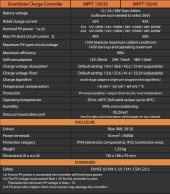i started with 1 x 110 wattpanel and pwm 10 amp 12v ssc a random led acid car battery and 150watt inverter.I started with a single 100 w panel and now I'm running a 600 w array with 12 v system. Thanks to the great folks and their knowledge on this forum. So yeah go BIG because you'll want more and you'll have plenty of things to charge. Now I want more power and want to convert to 24 v with the 40a CC that I have. I'm guessing I'll need more panels and something to convert 24v to 12v? Not sure. But yeah go BIG
I now have 20x 335 watt panels and 100amp 48v mppt ssc. 30 kwh lifepo4 battery for 48v system and 2000watt inverter in house and 7kwh battery for 12v system and 1500watt inverter in a caravan. Mars to oktober im offgrid
My electric company dont like me going offgrid, they threathend with basically fines if i go offgrid.
Ironically they cant just shut up about green and fossile free energy. Its all greed. They would use human babies as fuel if it would be profitable and if they would get away with it. fuck them
I just "moved" and they cant fine me. I intend to "move" back in winter




